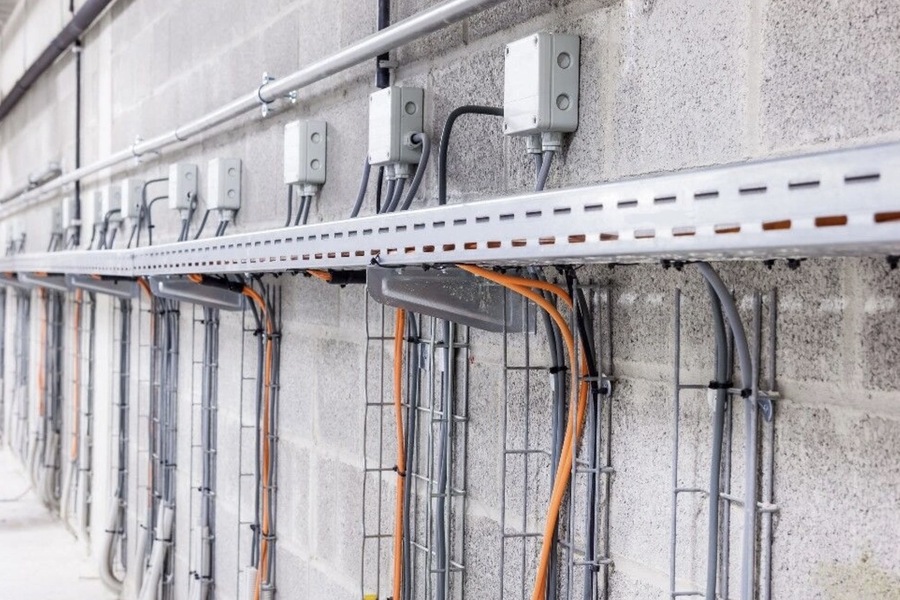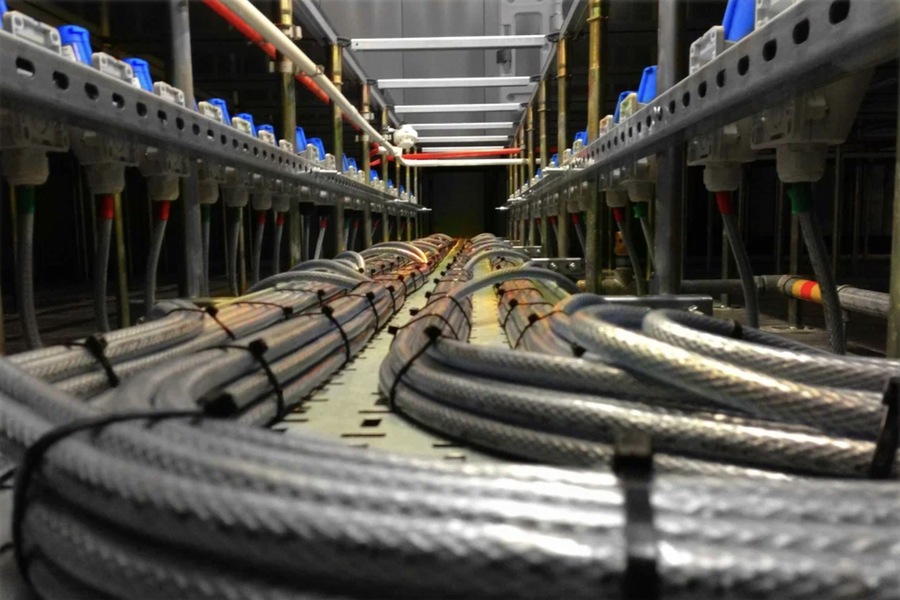Underground cable ducts, often referred to as underfloor trunking systems, are indispensable in modern infrastructure, providing a safe, organized, and reliable pathway for cables. These systems protect cables from environmental and mechanical damage, enhance operational efficiency, and simplify maintenance. The significance of underground cable ducts spans various industries, including construction, telecommunications, energy, and industrial sectors. This in-depth article explores the types of underground cable ducts, their technical specifications, detailed applications, and the leading manufacturers driving innovation in this critical field.
The Role and Importance of Underground Cable Ducts
Underground cable ducts serve as conduits for electrical, data, and communication cables, ensuring they remain shielded from external influences such as moisture, heat, and mechanical impact. In an era characterized by rapid technological advancement and increasing reliance on interconnected systems, these ducts form the backbone of critical infrastructure.
Key benefits of underground cable ducts include
- Enhanced Safety: By housing cables within secure conduits, the risks of accidents such as electric shocks, short circuits, and fire hazards are significantly minimized.
- Environmental Protection: Cables are safeguarded against natural elements, including water ingress, UV radiation, temperature fluctuations, and chemical exposure.
- Organization and Accessibility: Trunking systems enable systematic cable routing, making future expansions, repairs, or maintenance more straightforward.
- Longevity and Reliability: Properly installed cable ducts extend the lifespan of cables by protecting them from wear and tear.

Types of Underground Cable Ducts
Underground cable ducts are classified based on materials, designs, and intended applications. Each type has unique features tailored to specific operational needs.
- Plastic Cable Ducts
Materials: Typically made from polyvinyl chloride (PVC) or polyethylene.
Features
Lightweight and easy to handle.
Corrosion-resistant, ensuring durability in moist or chemically aggressive environments.
Non-conductive, offering excellent insulation properties.
Applications
Widely used in residential and commercial buildings for electrical and communication cables.
Ideal for underground installations in areas prone to waterlogging or chemical exposure.
- Metal Cable Ducts
Materials: Constructed from galvanized steel, stainless steel, or aluminum.
Features
Exceptional mechanical strength and impact resistance.
Fire-retardant coatings enhance safety in critical applications.
Resistant to vandalism, making them suitable for public infrastructure.
Applications
Found in industrial facilities, refineries, and power plants where cables face harsh mechanical and environmental conditions.
- Combination Cable Ducts
Materials: A hybrid of plastic and metal components.
Features
Combines the lightweight, corrosion-resistant qualities of plastic with the structural strength of metal.
Versatile and adaptable for diverse environments.
Applications
Frequently used in complex projects that require both durability and flexibility, such as airports and mixed-use developments.
- Cable Trays
Materials: Made from metal, plastic, or composite materials.
Features
Open design facilitates airflow and prevents overheating of cables.
Modular systems allow easy installation and modifications.
Applications
Often used in industrial plants and data centers for above-ground or exposed cable installations.
Detailed Technical Characteristics
The choice of an underground cable duct system depends on its technical characteristics, which influence performance and suitability for specific projects.
- Dimensions and Configurations
Cable ducts come in various widths and heights, accommodating different cable sizes and volumes.
Modular designs enable customization to meet specific project requirements.
- Material Properties
Plastic: Offers flexibility, chemical resistance, and lightweight handling.
Metal: Provides rigidity, mechanical protection, and resistance to extreme temperatures.
- Thermal Tolerance
Ducts are designed to perform reliably in extreme conditions, from sub-zero temperatures in arctic climates to high heat in industrial settings.
- Resistance to External Factors
Many systems are resistant to moisture, UV radiation, and chemicals, ensuring functionality in challenging environments.
- Fire Safety
Fire-retardant coatings and designs meet stringent safety standards, particularly in densely populated or high-risk areas.

Applications of Underground Cable Ducts
Underground cable ducts are crucial in diverse industries, each with unique requirements and challenges.
- Construction and Real Estate
Enables organized routing of electrical and communication cables in residential, commercial, and institutional buildings.
Essential for integrating smart building technologies and meeting modern connectivity demands.
- Industrial and Manufacturing
Provides safe pathways for power and control cables in factories and assembly plants.
Reduces the risk of downtime caused by damaged cables in harsh industrial conditions.
- Telecommunications
Forms the backbone of communication infrastructure by housing fiber-optic cables and ensuring reliable data transmission.
- Energy Sector
Essential for routing high-voltage power cables in power generation plants, substations, and renewable energy facilities.
Helps manage the complexity of grid systems, including underground power distribution networks.
Installation Best Practices
Proper installation of underground cable ducts ensures efficiency and reliability. Key stages include:
- Route Planning
Use rigid measuring cords to calculate the required cable lengths accurately.
Consider future expansions and maintenance needs during planning.
- Cable Arrangement
Maintain minimum spacing between cables to avoid overheating.
For multi-layer installations, secure cables with ties and ensure stability.
- Fastening
Fix cables at regular intervals, especially at directional changes or vertical arrangements.
- Testing and Quality Assurance
Verify circuit continuity and measure insulation resistance with an ohmmeter to ensure system integrity.
Leading Manufacturers in the Underground Cable Duct Market
The underground cable duct market is driven by innovation and quality assurance. Notable manufacturers include:
ABB: Renowned for high-performance cable management systems tailored to industrial applications.
Schneider Electric: Offers sustainable, energy-efficient ducting solutions for modern infrastructure.
Legrand: Specializes in versatile and modular cable duct systems for residential and commercial projects.
Nexans: A leader in cabling infrastructure, providing durable ducts for telecommunications and energy sectors.
Eaton (Cooper Industries): Delivers robust systems for heavy-duty industrial and hazardous environments.
Future Trends in Underground Cable Duct Technology
The underground cable duct industry continues to evolve, driven by technological advancements and increasing demands for sustainable infrastructure. Emerging trends include:
- Smart Duct Systems
Incorporating sensors for real-time monitoring of cable performance, temperature, and environmental conditions.
- Sustainable Materials
Growing use of eco-friendly materials, such as recycled plastics and biodegradable composites.
- Enhanced Durability
Development of advanced coatings and materials that improve longevity and reduce maintenance needs.
- Integration with Smart Grids
Supporting renewable energy networks and decentralized power systems with efficient cable management.
Conclusion
Underground cable ducts play a pivotal role in modern infrastructure, ensuring the safe, organized, and efficient routing of cables across diverse industries. From plastic and metal ducts to hybrid systems, the variety of options available caters to unique project requirements. Leading manufacturers continue to innovate, offering systems that enhance durability, safety, and sustainability. By selecting the appropriate type of duct and following best practices during installation, stakeholders can ensure reliable performance and long-term efficiency in their cable management systems. In a world increasingly reliant on connectivity and power, underground cable ducts remain an essential component of progress.

Hiking addict, mother of 3, record lover, Eames fan and brand builder. Performing at the crossroads of art and function to give life to your brand. Let’s make every day A RAZZLE-DAZZLE MUSICAL.
